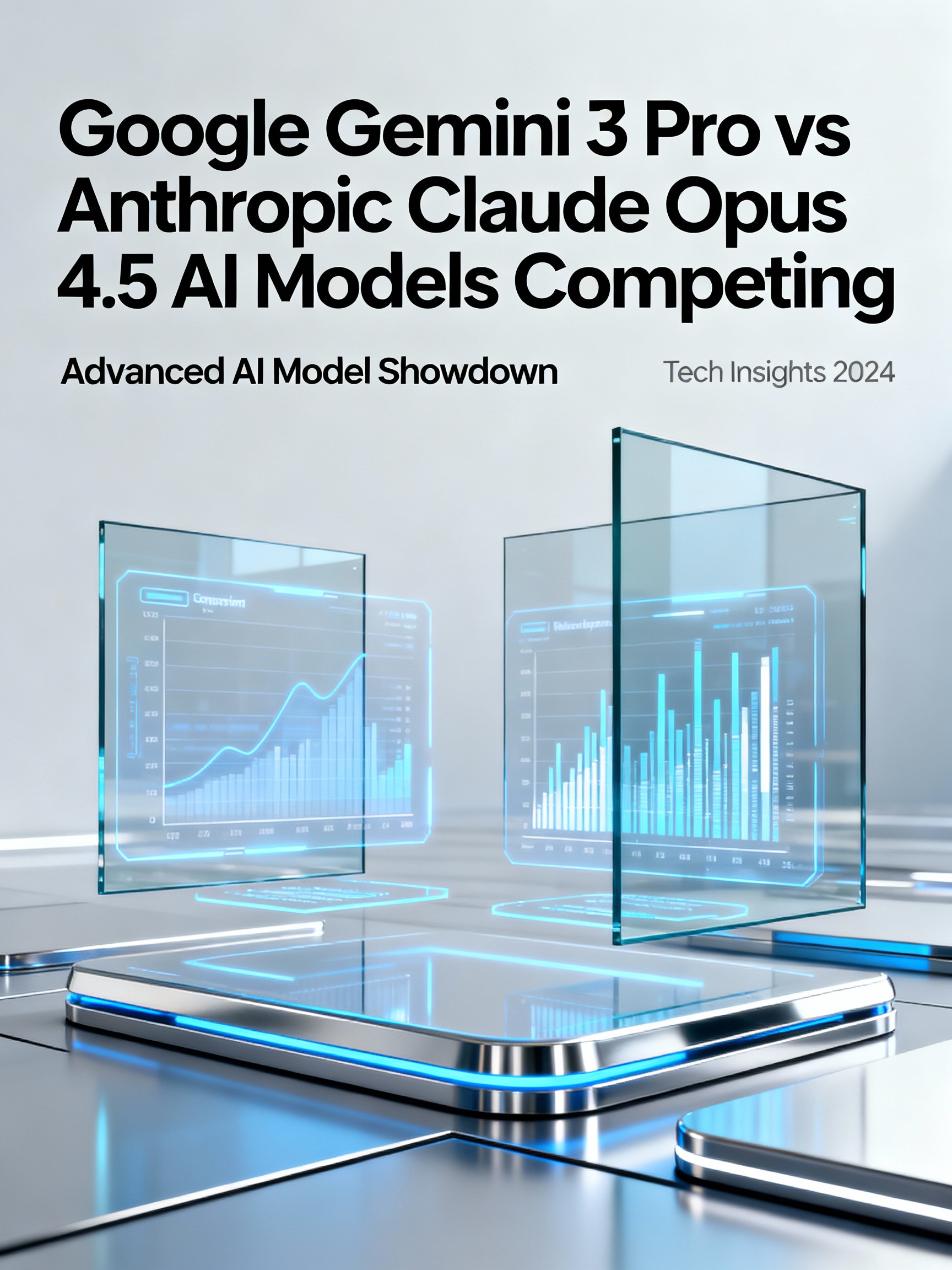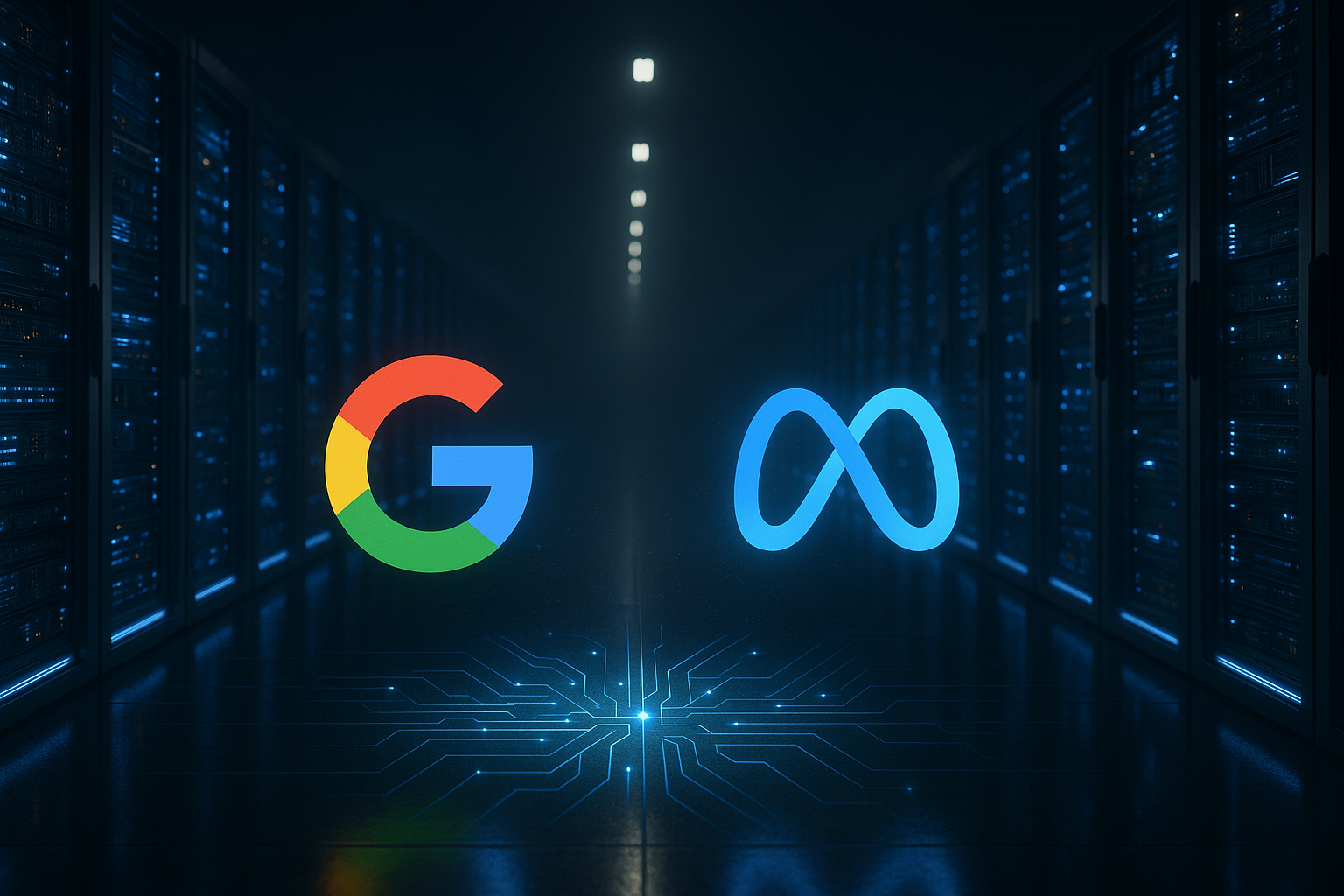AI Arms Race: Google vs. Microsoft, OpenAI's Math Breakthrough, and Regulatory Scrutiny: AI News 10. Oct. 2025
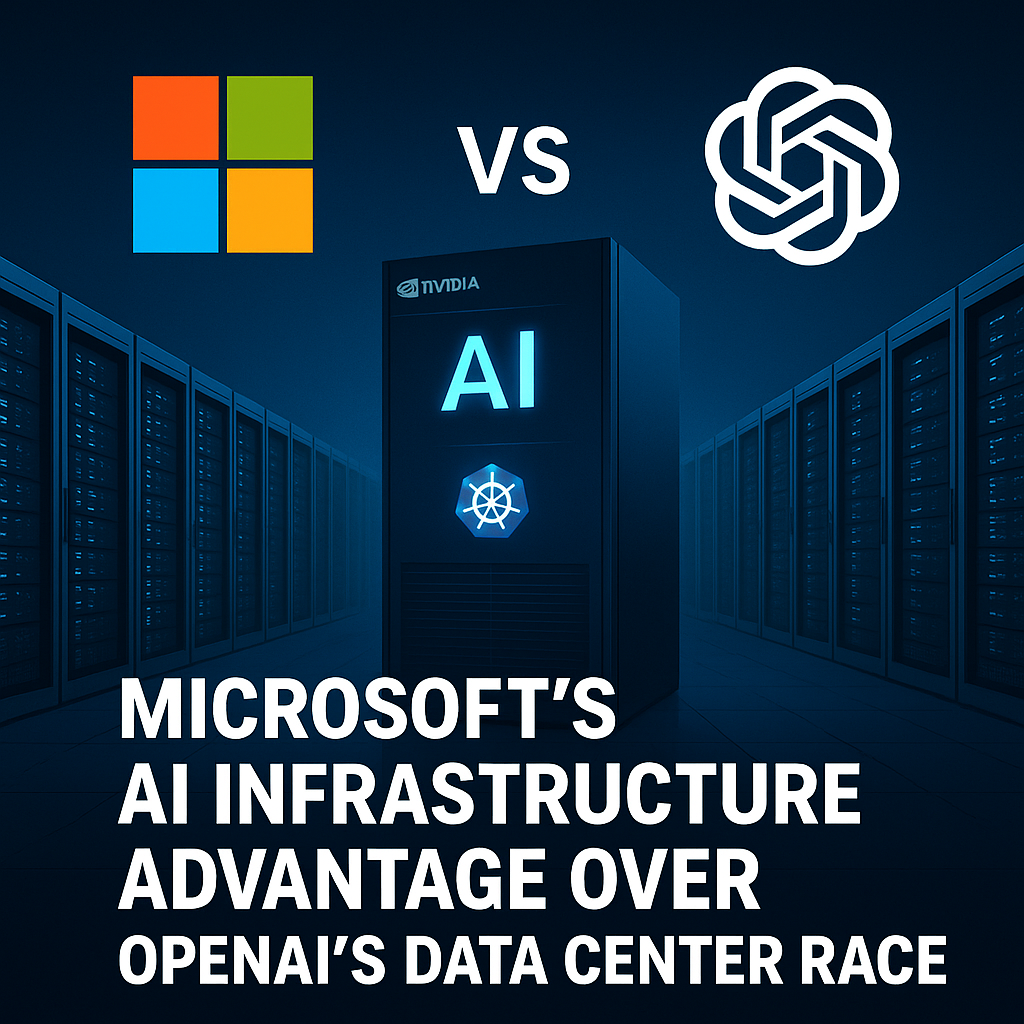
Google's Gemini Enterprise is challenging Microsoft's AI workplace dominance, offering a comprehensive platform to streamline workflows and boost productivity. By leveraging Gemini's language model and pre-built AI agents, businesses can automate tasks and focus on strategic initiatives, unlocking a competitive edge. Explore how Google's competitive pricing on Gemini Enterprise can help your business innovate with AI-driven automation.
Google's Gemini Enterprise Challenges Microsoft's AI Workplace Dominance
The AI arena is heating up as Google throws its hat into the ring with Gemini Enterprise, directly challenging Microsoft's established dominance in the AI-powered workplace. Google's offering, priced at $30 per month, is a clear signal that the battle for enterprise AI supremacy is officially underway.
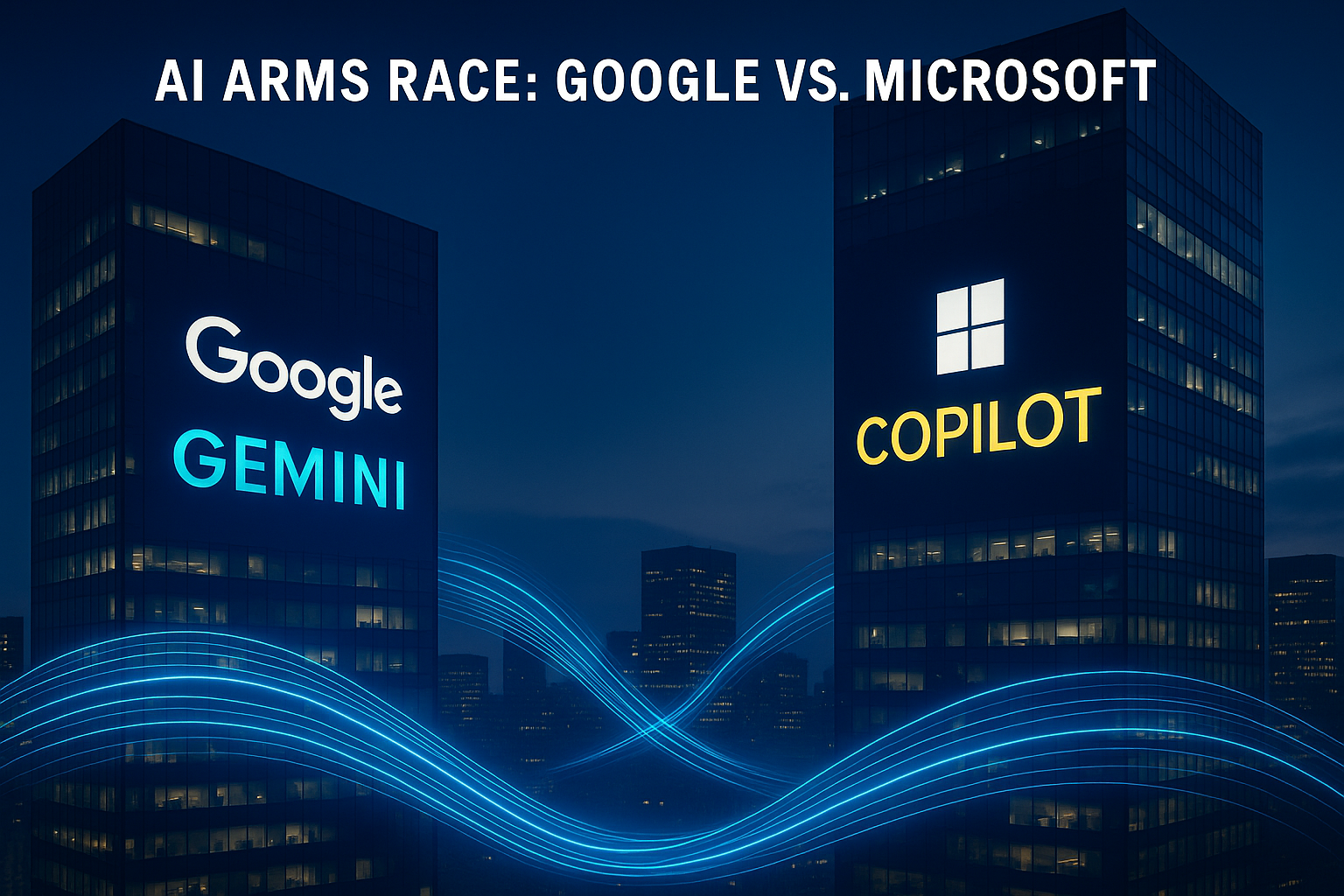
Gemini Enterprise: Google's AI Workplace Gambit
Google's Gemini Enterprise is not just another AI tool; it's a comprehensive platform designed to be a 'single front door for AI in the workplace.' This means businesses can leverage Gemini's powerful language model to interact with their data conversationally, streamlining workflows and boosting productivity. The platform offers a suite of features aimed at automating tasks through pre-built Google AI agents, making it easier for employees to focus on more strategic initiatives. This is a direct challenge to Microsoft 365 Copilot, which offers similar AI-powered assistance within the Microsoft ecosystem, and OpenAI's own burgeoning workplace solutions. For instance, one could compare the text generation capability to a tool like Grammarly, but with a much wider range of applications.
Early Traction and Enterprise Focus
While still in its early stages, Gemini Enterprise has already garnered attention from several high-profile companies. Figma, Klarna, Gordon Foods, Macquarie Bank, and Virgin Voyages are among the early adopters, signaling a strong initial interest in Google's AI-driven workplace solution. This adoption highlights the broad appeal of AI workplace solutions across diverse industries. Google Cloud is further emphasizing its comprehensive technology stack, positioning itself as a one-stop-shop for enterprises looking to implement AI solutions from the ground up.
The Broader Implications for AI Workplace Solutions
The launch of Gemini Enterprise and its competitive [Google Gemini Enterprise pricing] (a key long-tail keyword) is poised to reshape the landscape of [AI workplace solutions comparison] (another important long-tail keyword). As businesses increasingly seek ways to integrate AI into their daily operations, the competition between Google, Microsoft, and OpenAI will likely drive further innovation and more accessible AI tools. The availability of [Google AI agents for business automation] (our final long-tail keyword) will empower businesses to streamline processes, improve decision-making, and ultimately gain a competitive edge. Ultimately, this increased competition benefits everyone, as it pushes the boundaries of what's possible with AI and makes these powerful tools more accessible to businesses of all sizes.
OpenAI's o3 Model Achieves Unprecedented Mathematical Reasoning
In a stunning leap for artificial intelligence, OpenAI's o3 model has demonstrated unprecedented mathematical reasoning capabilities, signaling a potential paradigm shift in AI problem-solving.
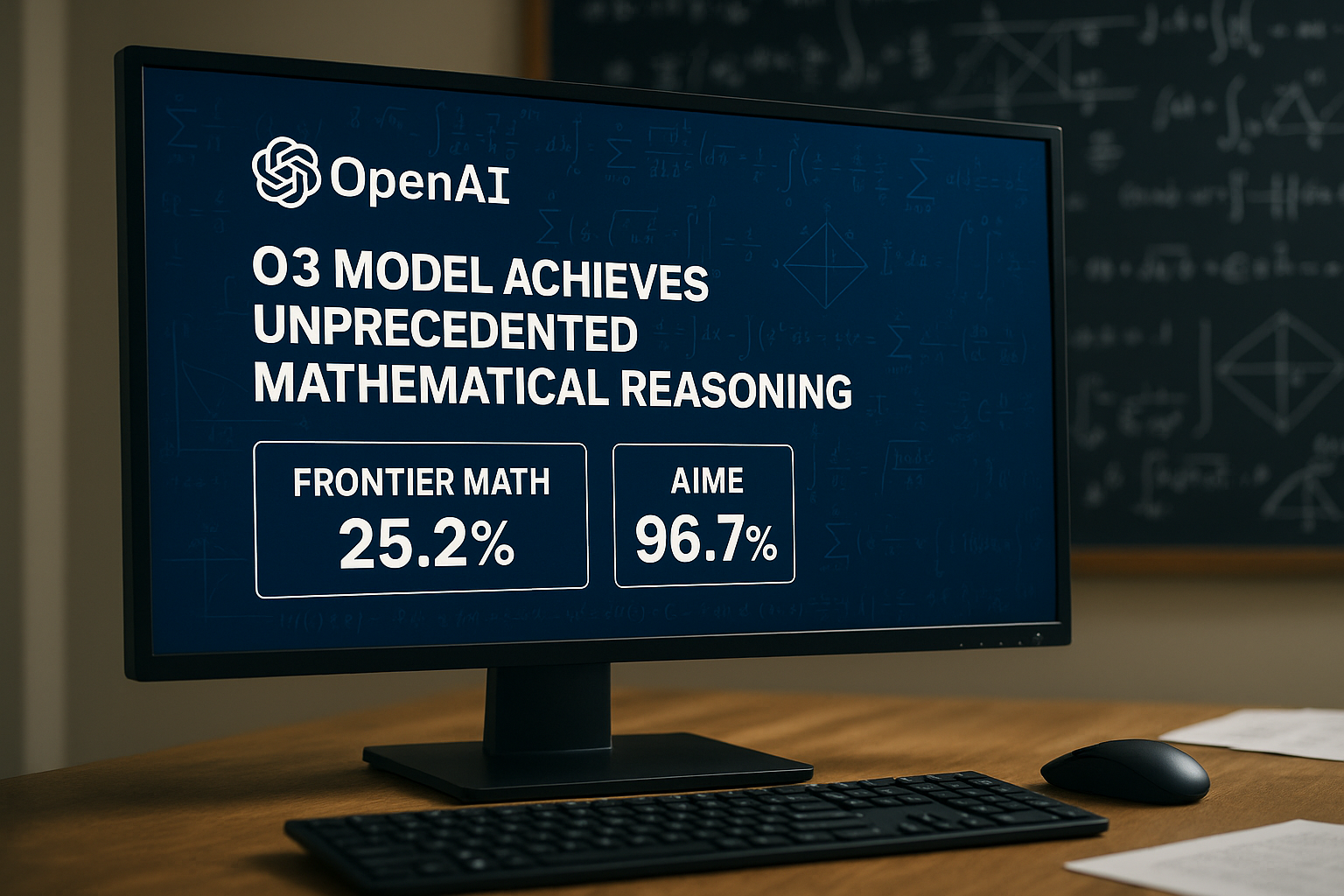
A Giant Leap in Mathematical Prowess
The o3 model has achieved a landmark score of 25.2% on EpochAI's FrontierMath benchmark. To put this in perspective, this represents a staggering 12-fold improvement over previous AI models when tackling graduate-level math problems. Imagine asking an AI to solve complex equations or prove advanced theorems – o3 is now significantly better equipped to handle such tasks. It's akin to upgrading from a basic calculator to a supercomputer overnight. Furthermore, the model achieved an impressive 96.7% accuracy on the notoriously difficult American Invitational Mathematics Examination (AIME), showcasing its mastery of advanced problem-solving techniques.
Beyond Math: Excelling in Coding
The mathematical prowess of o3 extends beyond pure calculations. The model also achieved a score of 2727 on Codeforces, a competitive programming platform, surpassing 99.8% of human coders. This is a remarkable feat, suggesting that o3 is not just crunching numbers but also demonstrating logical reasoning and algorithmic thinking that rivals top-tier human programmers. Tools like GitHub Copilot, an AI pair programmer that assists developers with code completion and suggestions, are already transforming the coding landscape, and o3's capabilities could further accelerate this trend.
The Performance Gap: Internal vs. Public
Despite these impressive results, some independent testing has revealed a potential performance gap between OpenAI's internal o3 model and the publicly available version. This discrepancy raises questions about the consistency and accessibility of cutting-edge AI capabilities. It's crucial to consider that the performance of AI models can vary depending on factors like dataset size, training methods, and hardware infrastructure. Understanding these nuances is vital for accurately evaluating and applying AI in real-world scenarios. One way to analyze the differences between these models is to use a tool like Weights & Biases, which helps you track and visualize machine learning experiments.
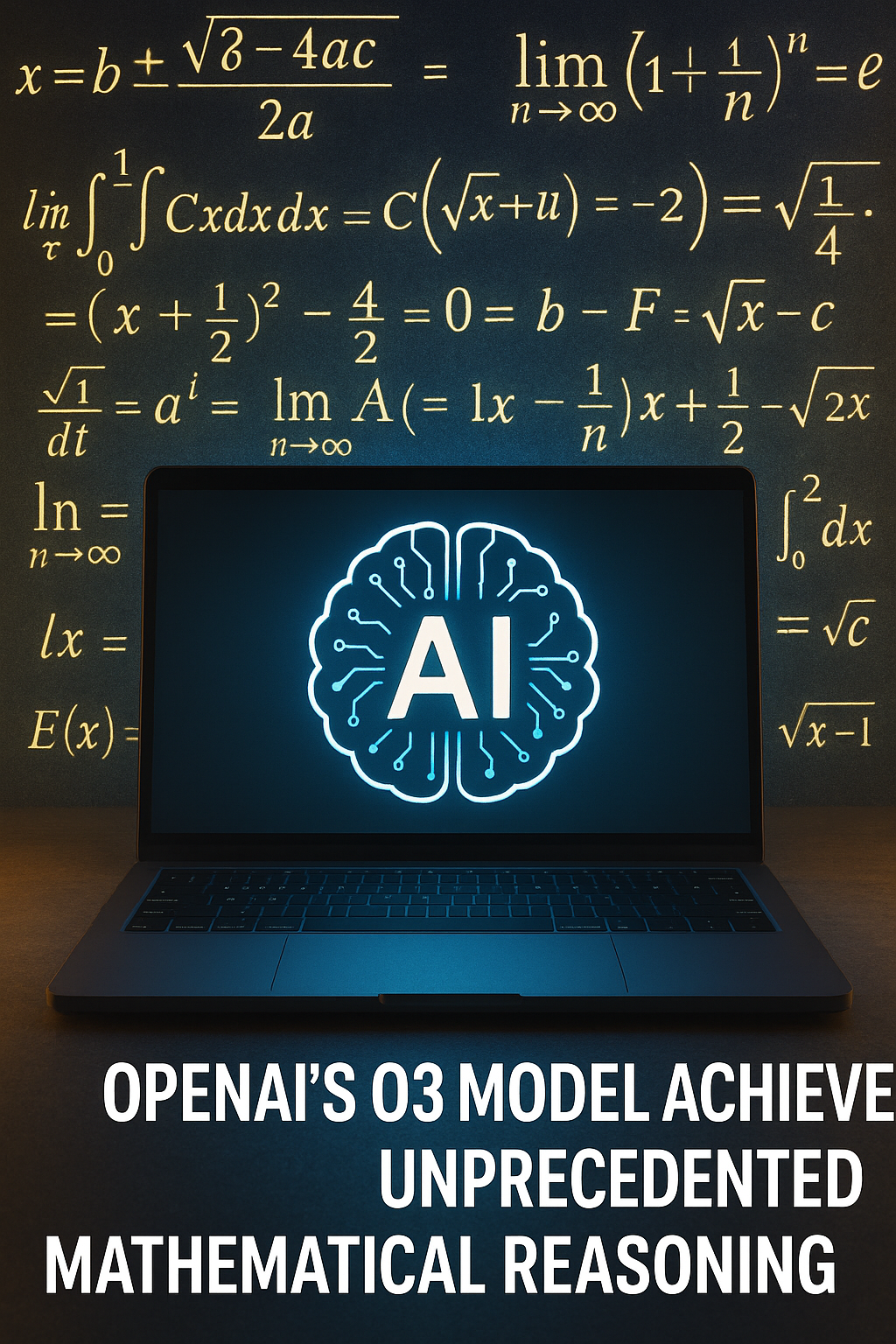
The implications of OpenAI's o3 model are far-reaching, highlighting the accelerating pace of advancements in AI and the increasing focus on complex reasoning abilities. This breakthrough underscores the importance of ongoing research, rigorous testing, and transparent communication about the capabilities and limitations of AI models as they continue to evolve. The continuous development of tools capable of advanced mathematical reasoning is revolutionizing fields from scientific research to financial modeling, making it an exciting area to watch in the coming years. Stay up to date with the latest developments in AI by checking out our AI News section.
OpenAI Escalates Antitrust Battle Against Big Tech in the EU
The gloves are off: OpenAI is taking its battle with Big Tech to the European Union, escalating the AI arms race beyond technological innovation and into the realm of regulatory scrutiny. The company has reportedly filed antitrust complaints against Google, Microsoft, and Apple in the EU, signaling a major shift in its strategy to compete with tech giants. This move underscores the growing tensions as AI development becomes increasingly concentrated in the hands of a few powerful corporations. Let's dive into the details of this escalating conflict.
Allegations of Unfair Competition
OpenAI's antitrust complaints center on the argument that Google, Microsoft, and Apple have created unfair competitive barriers within the AI landscape. The core of the issue, according to OpenAI, lies in these companies' data dominance and platform control, which allegedly stifle competition and make it exceedingly difficult for smaller players to thrive. The complaint highlights the challenges OpenAI faces in competing against companies with entrenched positions and vast resources. It urges regulatory intervention to level the playing field and foster a more equitable environment for AI innovation. Think of it like this: trying to start a lemonade stand when your neighbors own all the lemon groves, sugar refineries, and the best spots on the block.
Data and Tool Access at the Heart of the Issue
A key focus of OpenAI's complaint is restricted access to essential data and tools necessary for AI competition. In the AI world, data is the new oil, and those who control the flow have a distinct advantage. OpenAI argues that the dominant tech companies are leveraging their control over data pipelines to limit access for competitors, thereby hindering their ability to develop and refine AI models. This echoes concerns raised by other AI companies about the concentration of resources in the hands of a few, potentially leading to a monopolistic environment. Tools like TensorFlow and PyTorch are essential for AI model development, and equitable access to these resources is vital for fostering innovation across the board.
OpenAI's Expanding Ambitions
This antitrust move comes at a crucial time, as OpenAI expands its reach into business sectors traditionally dominated by Microsoft. With the increasing capabilities of models like ChatGPT, a versatile AI chatbot capable of generating text, translating languages, and answering questions, OpenAI is venturing into territory that directly competes with Microsoft's established enterprise solutions. This strategic expansion intensifies the rivalry between the two companies and adds another layer of complexity to the regulatory landscape. The outcome of these antitrust complaints could significantly reshape the future of AI competition in Europe and beyond. Keep an eye on our AI News section for the latest updates.
Global Financial Regulators Increase AI Monitoring
The world of finance, never one to shy away from technological innovation, is now squarely in the sights of global financial regulators who are stepping up their scrutiny of artificial intelligence. International financial watchdogs are unveiling intensified AI monitoring plans that will span across banking and financial services, marking a significant shift in how AI is perceived and managed within the global economy.
Intensified AI Monitoring Plans
These enhanced monitoring plans aren't just a casual observation; they represent a robust framework designed to address growing concerns about AI-related systemic risks and vulnerabilities. This framework acknowledges that AI, with its increasing sophistication and integration, has the potential to introduce new and complex challenges to financial stability. It's about ensuring that the benefits of AI – such as increased efficiency and enhanced decision-making – don't come at the cost of unforeseen risks that could ripple through the entire financial system.
Bank of England's Comprehensive Approach
A prime example of this proactive regulatory stance is the Bank of England's Financial Policy Committee (FPC), which has laid out its comprehensive monitoring approach in detail. The FPC isn't just looking at AI's potential upsides; it's keenly focused on how widespread AI adoption could inadvertently create new vulnerabilities. These vulnerabilities could manifest through increased correlations in trading strategies or procyclical decision-making, where AI algorithms amplify market trends, potentially leading to instability. For instance, if multiple firms use AI to manage risk and all AI systems are trained on similar data, that data could be biased or incomplete, which might result in similar erroneous decisions across the market.
AI: From Experiment to Infrastructure
What's particularly noteworthy is the recognition that AI is no longer just an experimental technology relegated to the back rooms of financial institutions. It is rapidly evolving into mission-critical infrastructure, underpinning essential functions from fraud detection and customer service to risk management and algorithmic trading.
This transformation demands a commensurate level of regulatory oversight to ensure that AI systems are robust, transparent, and accountable. As AI continues to weave itself into the fabric of the financial world, these monitoring efforts will be crucial in safeguarding the stability and integrity of the global financial system. By proactively addressing the potential systemic risks of AI in finance, regulators aim to foster innovation while preventing future crises. This proactive approach is essential for maintaining trust and confidence in an increasingly AI-driven financial landscape. If you want to learn more about the trends in the AI space, check out AI News for up-to-date reporting.
Microsoft's AI Infrastructure Advantage Over OpenAI's Data Center Race
In the escalating AI arms race, infrastructure is king, and Microsoft is flexing its muscles to demonstrate its current lead.

Microsoft's AI Factory: A Deployed Advantage
Microsoft recently showcased its operational AI "factory" system, a massive deployment featuring over 4,600 NVIDIA GB300 rack computers. This reveal serves as a tangible example of Microsoft's commitment to AI and its ability to deliver on a large scale. It's not just about having the technology; it's about having it deployed and ready to handle the intense computational demands of modern AI. This kind of infrastructure is essential for training and running sophisticated AI models like ChatGPT, which requires immense processing power.
Existing Data Center Dominance
Beyond the impressive NVIDIA deployment, Microsoft boasts an existing network of over 300 data centers spread across 34 countries. This established global footprint gives them a significant head start in the OpenAI data center race. Building new data centers from scratch is a costly and time-consuming process. Microsoft’s pre-existing infrastructure provides a critical foundation for rapidly expanding its AI capabilities. This means faster deployment, reduced latency for users around the world, and a more resilient AI ecosystem.
Blackwell Ultra GPUs: A Promise of Future Power
Microsoft isn't resting on its laurels. The company has publicly committed to deploying "hundreds of thousands of Blackwell Ultra GPUs." These next-generation GPUs promise a significant leap in performance, enabling even more complex AI models and applications. The scale of this planned deployment underscores Microsoft's ambition to remain at the forefront of AI innovation. It's a clear signal to the market that they are investing heavily in the future of AI computing. You might even want to check out Nvidia AI Workbench, that might improve your workflow.
Strategic Timing: A Response to OpenAI
The timing of Microsoft's announcements appears strategic, occurring immediately after OpenAI's own high-profile infrastructure initiatives. This suggests a competitive dynamic where each company is vying to demonstrate its capabilities and attract developers, researchers, and customers to its platform. This is also an example of AI News, keeping the world updated on the latest advancements.
Meeting Today's Demands of Frontier AI
Microsoft's message is clear: they are uniquely positioned to meet the demanding infrastructure requirements of frontier AI today. While others are still in the planning or early deployment phases, Microsoft has already built a substantial AI "factory" and possesses the data center footprint to support massive growth. This advantage could prove crucial in attracting top AI talent and securing lucrative partnerships in the years to come. The ability to train more complex models, deploy them globally, and iterate quickly will be the defining factors in the Microsoft AI infrastructure advantage.
🎧 Listen to the Podcast
Hear us discuss this topic in more detail on our latest podcast episode: https://open.spotify.com/episode/7jfrxcTrdBQkqWmdIMKyqp?si=vrNAOzoSSt69USDB6fu6bw
Keywords: AI, Artificial Intelligence, OpenAI, Microsoft, Google, Gemini Enterprise, o3 model, Antitrust, AI Regulation, Financial Monitoring, AI Infrastructure, Data Centers, Machine Learning, Deep Learning, AI Competition
Hashtags: #AI #ArtificialIntelligence #MachineLearning #DeepLearning #Innovation
For more AI insights and tool reviews, visit our website https://best-ai-tools.org, and follow us on our social media channels!
Website: https://best-ai-tools.org
X (Twitter): https://x.com/bitautor36935
Instagram: https://www.instagram.com/bestaitoolsorg
Telegram: https://t.me/BestAIToolsCommunity
Medium: https://medium.com/@bitautor.de
Spotify: https://creators.spotify.com/pod/profile/bestaitools
Facebook: https://www.facebook.com/profile.php?id=61577063078524
YouTube: https://www.youtube.com/@BitAutor
Recommended AI tools

Beauty.AI - Enhancing Beauty through Artificial Intelligence
